Meadow bluegrass in the photo. Lawn in the garden

As soon as the snow melts from the fields, the clearings turn bright green. This grass - the earliest of the cereal family - meadow bluegrass. Has the ability to grow quickly. It is not capricious to climate conditions and soil composition.
Content:
- Structure and structure
- Lawn varieties of meadow bluegrass
- Characteristics
- Reproduction and compatibility of cereals
Once upon a time, bluegrass began its journey from the shores of Australia and New Zealand. Today, from the point of view of the average person, this is the most common grass growing everywhere. However, meadow bluegrass is considered a valuable perennial cereal crop and is used primarily for the formation of high-quality decorative lawns.
Structure and structure
The structure of the root system is loose and fibrous. Forms an elastic turf that is compact. The bulk of the roots are located in the upper soil layer. Multiple vegetative rhizomes penetrate deep into the soil. They form a significant number of shoots with an independent root structure around the mother bush. Well-branched roots are able to firmly strengthen the upper soil horizon.
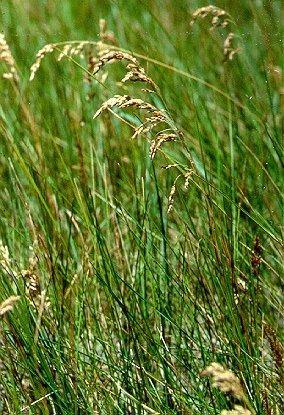
The plant produces a large number of leaves. The leaves are narrow, linear. The width of the leaf blade is no more than 4 mm and the length is no more than 30 cm. The color of the leaf is intense green. It reproduces by seeds, throwing out a peduncle up to 90 cm long. The inflorescence is a spikelet of bright green, less often purple color.
Lawn varieties of meadow bluegrass
Some varieties of meadow bluegrass used to form a lawn:
- Connie;
- Broadway;
- Platini.
The shoots of these varieties have a fairly dense growth, approximately 350 shoots per 100 sq.cm., due to which a fully formed lawn has an ideal appearance without “bald spots.”
Meadow grass is used as the highest quality grass covering for lawns. In the garden, its use is not limited to the formation of recreation areas. Thanks to its vitality and rapid recovery, meadow bluegrass is sown in problem areas. The creeping rhizome quickly fills depressions and uneven soils, due to which the area visually acquires a perfectly flat surface.
Characteristics
The most positive qualities of this cereal include its high vitality and resistance to trampling. Meadow bluegrass is mowed at least 4 cm from the soil surface. After this procedure, the plant quickly forms many vegetative shoots, tightening the soil “bald spots” to form a smooth turf.

The leaves grow vertically. When using a rotary mower, they mow easily and very cleanly, without creating uneven spots or breaks. In addition, falling between the grass stand, the cut leaves do not form lumps on the soil surface. Meadow bluegrass is quite resistant to various types of diseases, parasites, and putrefactive bacteria. Mown and fallen grass mixes with the soil and participates in the formation of turf.
It is advisable to fertilize and lime the soil before sowing meadow bluegrass. Salty and acidic soils are bad for the plant. Also, places deprived of direct sunlight have an adverse effect on it.The plant is frost and drought resistant, but in summer the grass needs watering.
Reproduction and compatibility of cereals
Meadow bluegrass reproduces by seeds. In open ground, seedlings appear two weeks after sowing. For quick germination in small areas, a film coating is used. Thanks to this method, seedlings appear within a week.
In the first year, meadow bluegrass grows very slowly. Good quality lawn is obtained in the second or third year after sowing. Therefore, when cultivating a lawn, they use a mixture of grasses from forbs, where the share of meadow grass is about 60%.
Meadow bluegrass is well compatible with other cereals, such as perennial ryegrass; thin, white bentgrass; meadow fescue and red fescue. The latter combination is successfully used to strengthen slopes.
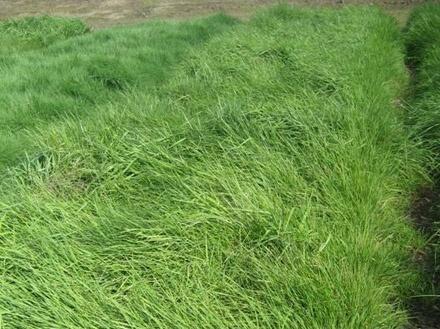
A mixture of meadow bluegrass, meadow fescue and red fescue is an ideal combination of grasses for creating a high-quality lawn, as it can grow on almost any type of soil. The exception is wetlands. Meadow bluegrass blooms only once a year, but under favorable conditions and sufficient soil fertility, a second cutting is possible.
In conclusion, we can say that thanks to its fantastic ability to recover, meadow bluegrass is widely used as the main type of cereal for the design of not only magnificent lawns and luxurious parterres of personal plots. He participates in the formation of unassuming lawns in park areas, children's and sports grounds, as well as park lawns. It is used in different climatic zones and with different types of soil.
Production rolled lawns is entirely based on the use of meadow bluegrass as the main planting material. The positive qualities of this cereal include not only its drought and frost resistance, but also its long lifespan. With optimal care, the cereal can survive up to 30, and in exceptional cases – up to 50 years.


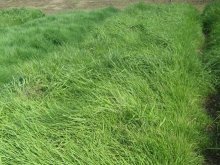
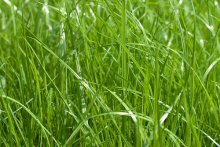


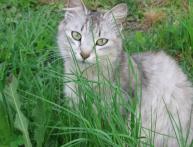
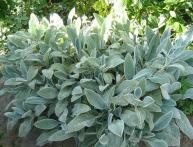

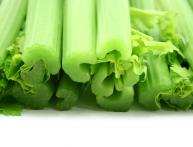
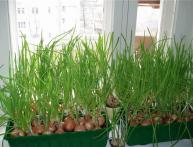
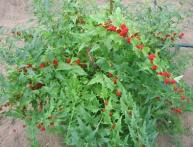
Comments
I love grass - I dream of my own vegetable garden or garden in the backyard - but there are few such places in the city - damn high-rise buildings!!!
if you consider the option of wholesale prices, your neighbors may have an issue
If you also want to buy rolled lawn wholesale, then it will be cheaper for you. So
the price per square meter turns out to be significantly lower. Of course, we must pay tribute
quality of rolled turf
consisting of first-class bluegrass varieties of American selection.